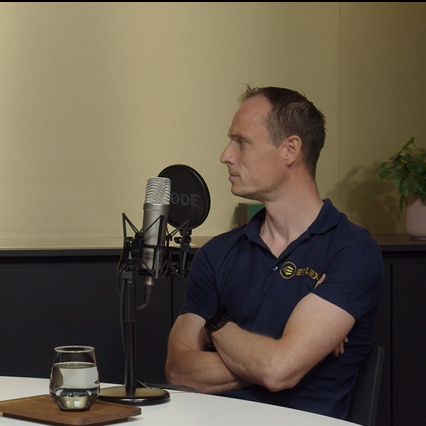From a small trade in an old shed to a major family business
In the 1980s, Henk van Hulst started trading demolition wood and other used building materials from an old shed in Het Land van Maas en Waal. Over the years, he expanded into a full-fledged timber trade, and with the arrival of his sons Raymond and Bart in 1994 and 2000, it became a true family business. Today, the sons have taken over the reins from their father and are now at the helm. In addition to Van Hulst Timber Trade, Raymond and Bart established a separate company in 2020: Etilex.
Searching for an ERP system to support growth
Sander Cox started as the financial manager at Etilex in 2022, a position where planning and cost management play a crucial role. He quickly saw challenges but also opportunities. Sander explains: “During the COVID period, our company grew significantly. Especially on the organizational front, a lot was happening, and we urgently needed an ERP system. For instance, we didn't have a purchasing process; everything was bought based on intuition. That needed to change."
“We unanimously chose Odoo's ERP system”
A project group was formed consisting of colleagues with various expertise. The goal of the group was clear: to choose an ERP system that meets the organization's needs and desires. The choice for Odoo was unanimous, says Sander: “The four of us made our decision independently and wrote down our preference on a card. When we flipped the cards, it turned out we had all chosen Odoo.” According to him, there are several reasons for this: “The open structure, scalability, and modern interface. It feels like you're swiping through your smartphone…”
ERP implementation partner Dynapps quickly came into view
In addition to an ERP system, Sander and his colleagues immediately searched for an ERP implementation partner to help them with the deployment and use of Odoo. Dynapps quickly came into view, and it became even more interesting when it was announced that a Dutch office would be opening soon. “We invited Dynapps, and within a few weeks, we were able to get started,” Sander recalls. “Things moved so quickly that within a few months, we were already using Odoo for administration.”
Working together on the implementation of Odoo
Satish Sewnarain, project manager at Dynapps, guided Sander and his colleagues through the Odoo implementation, primarily through workshops. Satish explains: “In these sessions, we often take a step back, because before implementing processes, you should first consider whether they can be optimized. Can it be more efficient? Is the process sustainable? Does it align with the business strategy? Sometimes you need to slow down, think things through, and only then move forward. That leads to the best results.”
"Thanks to Dynapps, we were able to start administering Odoo within just a few months."
Making decisions based on data instead of gut feeling
The Odoo ERP system is now fully operational, and Sander and his colleagues are very satisfied: “The purchasing process is no longer based on intuition but on the available data. There’s now an entire authorization process in place. This gives everyone a much clearer insight into our stock, what we expect to receive, and what we still need to purchase. This allows us to serve our customers much better, which is exactly what we aim for."



Do’s and Don’ts according to experts
The entire process has been very educational for the Etilex team and the Dynapps team. For this reason, Sander and Satish share the most important do’s and don’ts regarding the ERP system implementation phase.
- Don’t: Too Much Customization
Sander: “We applied too much customization to some modules because we tried to accommodate everyone’s wishes. But customization can cause significant hurdles. My advice: stick to the standard modules when possible. It's financially advantageous and provides a solid foundation for your ERP system.” - Do: Prepare Your Colleagues
Satish: “Be aware that people within an organization may have been working in the same way for years. A sudden change can cause resistance. Make sure people feel involved and heard. Prepare employees for what’s coming and include the end-user’s voice in the process.”